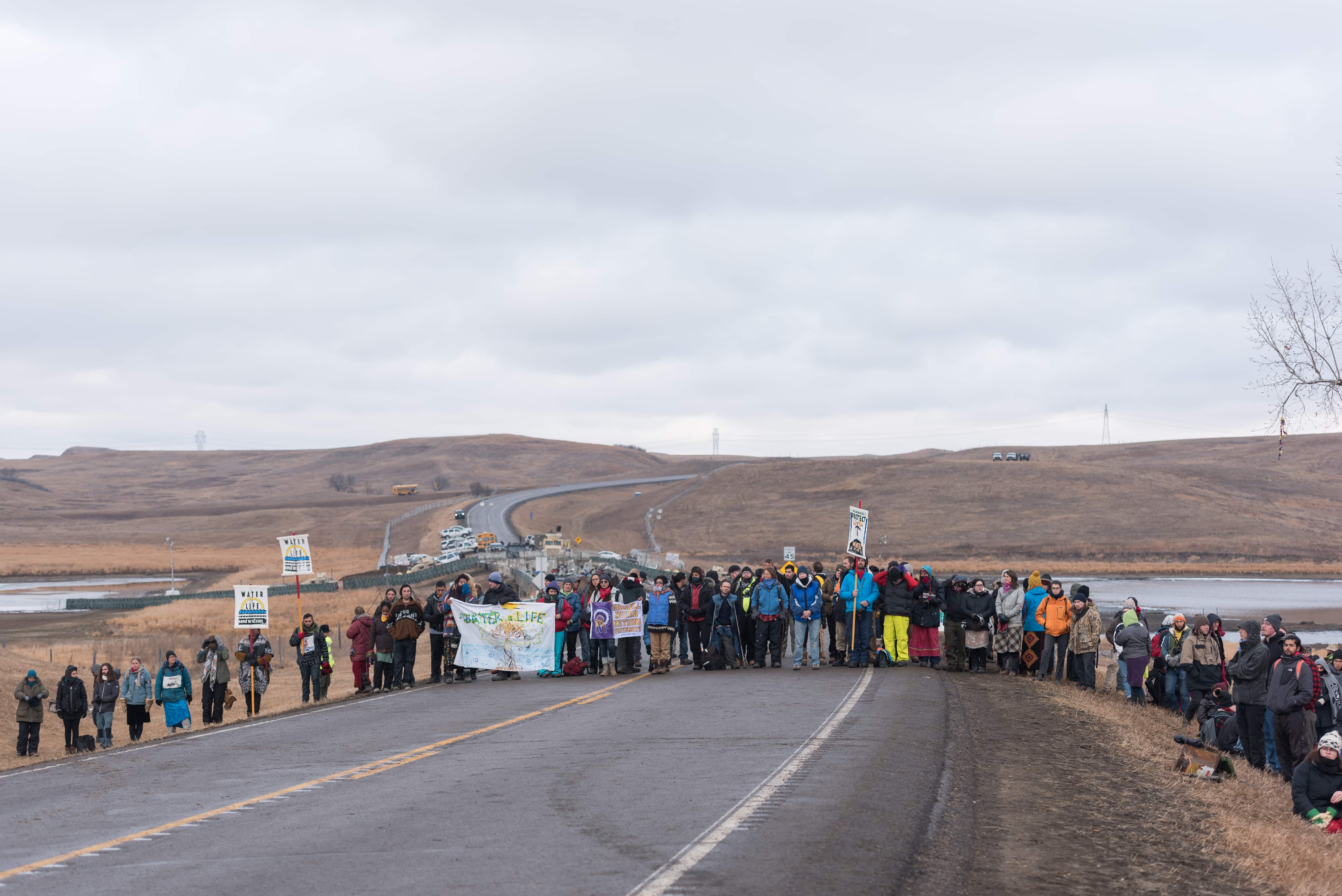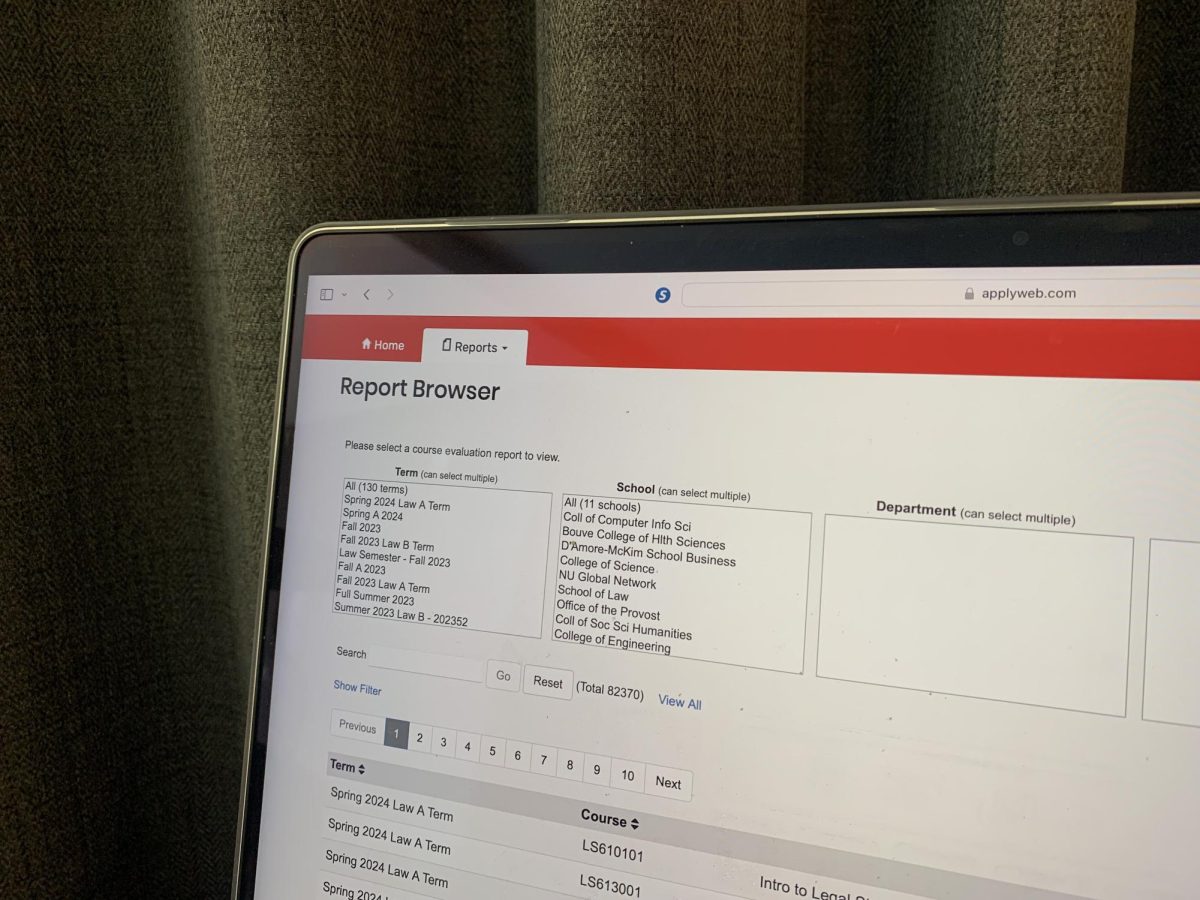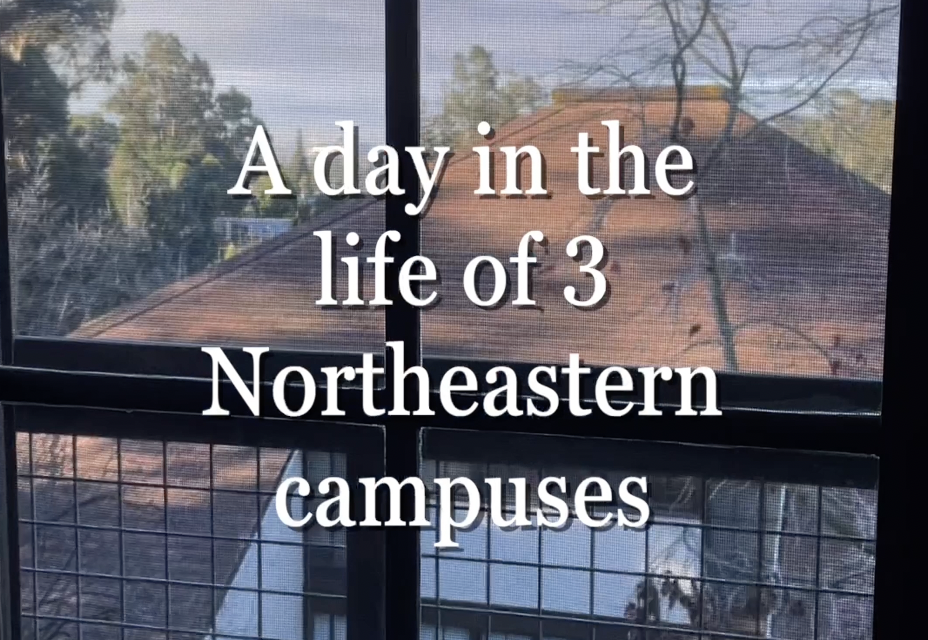By Scotty Schenck, news staff
Eleven Northeastern students sat down on Wednesday, Nov. 23 for an early Thanksgiving dinner in White Bear Lake, Minnesota. They didn’t stay long: At midnight, they left for North Dakota to volunteer at the Standing Rock Reservation.
A few inches of snow lay outside the home of Heidi and Scott Boyd, parents to third-year electrical engineering major Nick Boyd. Heidi Boyd prepared turkey, stuffing, gravy and mashed potatoes as activists talked eagerly about their upcoming journey.
“Don’t go to jail,” Scott Boyd said jokingly.
After nearly 32 hours of travel, the students arrived at Standing Rock on Thanksgiving day to volunteer alongside thousands of others at the Oceti Sakowin Camp in Cannon Ball, North Dakota. The students helped with day-to-day functions at the camp until Saturday, Nov. 26.
“We weren’t going to Standing Rock because it was our action,” said Austin Williams, senior environmental studies and political science major. “For us, traveling to Standing Rock to join in that struggle and to bear witness, following indigenous leadership and bringing the story back […] was the most material way that we could support the efforts ongoing at the camp.”
Before the trip, Northeastern students raised more than $2,000 on YouCaring.com to donate to the Standing Rock Sioux. Nick Boyd said the group is still deciding the best way to donate the money.
“People donating money is wonderful, but we also need to get those people out, making noise, being actively involved in their communities,” Nick Boyd said.
Oceti Sakowin was set up on federal land just north of the reservation in August to protest the construction of the Dakota Access Pipeline (DAPL), a 1,172-mile oil pipeline from North Dakota to Illinois being constructed by Energy Transfer Partners, LLC. Standing Rock members say the $3.8 billion pipeline will threaten their water supplies, noting the potential for oil leaks, and destroy sacred lands and tribal burial grounds.
The protests first began in July and have been largely peaceful, but there have been hundreds of arrests and some violent clashes, with police employing rubber bullets, pepper spray, tear gas and water cannons in freezing temperatures.
To the Northeastern students, the sacrifice of modern conveniences over the Thanksgiving holiday was nominal compared to the struggles of the indigenous people.
Oceti Volunteer and Grounds Operations Coordinator Erick Fiero said volunteers do tasks including cooking, cleaning, chopping wood, sorting donations and assisting elders.
“Volunteers have been pivotal,” he said. “If you come here, please commit yourself to volunteering, to a good day’s work at least.”
Third-year environmental studies major Steph Gorney said she was proud to help with tasks such as food preparation and organizing.
“A lot of the work was menial work, which is exactly what they need so I’m happy to do it,” she said. “We kept hearing from the indigenous people who were there that the support really helps build their spirits and helps strengthen the movement.”
The power of volunteerism from so many different people was felt at the camp, said J.D. Goodhouse, of the Sioux tribe, who lives at Oceti.
“It makes me feel happy that we’re not alone […] with what we believe is morally right,” he said. “It’s for everyone’s children, not just indigenous people who need water.”
For locals, the struggle can be condensed into three words: Water is life, or “mni wiconi” in the native language. Mason Redwind of the Crow Creek Sioux in South Dakota said he came to Oceti on Aug. 20, along with his brother, several members of his tribe and nine horses.
“Water, in terms of our culture and our religion, is one of the most important aspects of our life,” Redwind said.
Standing Rock Sioux depend on the water — the difference between life and death, said Kenzie Carry-Moccasin, an 18-year-old who has lived on the reservation her entire life.
“We and my family really look to the water,” she said. “If our water gets tainted, we aren’t the only to get impaired, but we will be the first.”
In addition to the potential danger to the water supply, the Sioux are also concerned about the pipeline’s route over a sacred burial ground called Turtle Island. Goodhouse said continuing the pipeline through this route is “knowingly desecrating sacred burial grounds.”
“It’s a little traumatizing,” Carry-Moccasin said. “I learned when we were younger that there are many ancestors buried there.”
Despite occasional violence, Redwind said the struggle at Oceti has focused on prayer and peace.
“[People’s] prayers are a lot more powerful than they think,” he said. “It’s a peaceful ceremony. It shouldn’t be thought of as anything other than that.”
On Thursday, Nov. 24, water protectors held a protest at Turtle Island. Dozens carried signs reading “Mni Wiconi.” A makeshift bridge allowed protesters to cross to the base of the island as armed officers from the Morton County Sheriff’s Department looked down from the hilltop.
The demonstration was nonviolent, and protesters even made offers to the police officers to join them. Police said through megaphones they did not want confrontations with the protesters.
On Friday, Nov. 25, the U.S. Army Corps of Engineers wrote a letter to Standing Rock Sioux Chairman Dave Archambault II ordering Oceti to be vacated by Dec. 5. Colonel John W. Henderson wrote he was concerned for the “safety and well-being” of the protesters due to harsh North Dakota winter conditions and possible violence. He added they could be subject to prosecution if they stayed.
Later that day, Archambault released a statement, saying he was “deeply disappointed in this decision.”
“The best way to protect people during the winter, and reduce the risk of conflict between water protectors and militarized police, is to deny the easement for the Oahe crossing,” he said.
On Saturday, Nov. 26, tribe members said in a press conference they would not leave. The following day, the Army Corps updated its statement, saying it had “no plans for forcible removal.”
On Monday, Nov. 28, North Dakota Governor Jack Dalrymple issued an emergency evacuation for all Morton County structures in areas managed by the Army Corps. Dalrymple said he ordered this due to “anticipated harsh winter conditions” and he would not forcibly remove water protectors.
For many visitors, the cold has been the most difficult part of being at Oceti, with wind chill dipping to single-digit temperatures. The resolve of both locals and many volunteers has remained unchanged.
“We’ve shown our support, we’ve prayed nonstop. We’ve protected the women, the children, the water,” Redwind said. “We’re going to be here until it’s over.”
Senior anthropology and international affairs dual major Maya Carlson said people should not romanticize the indigenous water protectors for their grit in the face of harsh weather.
“They’re [protesting] because that’s what needs to be done,” she said. “That is their land, they are tied to it. It’s a part of their history.”
Photo by Scotty Schenck


















